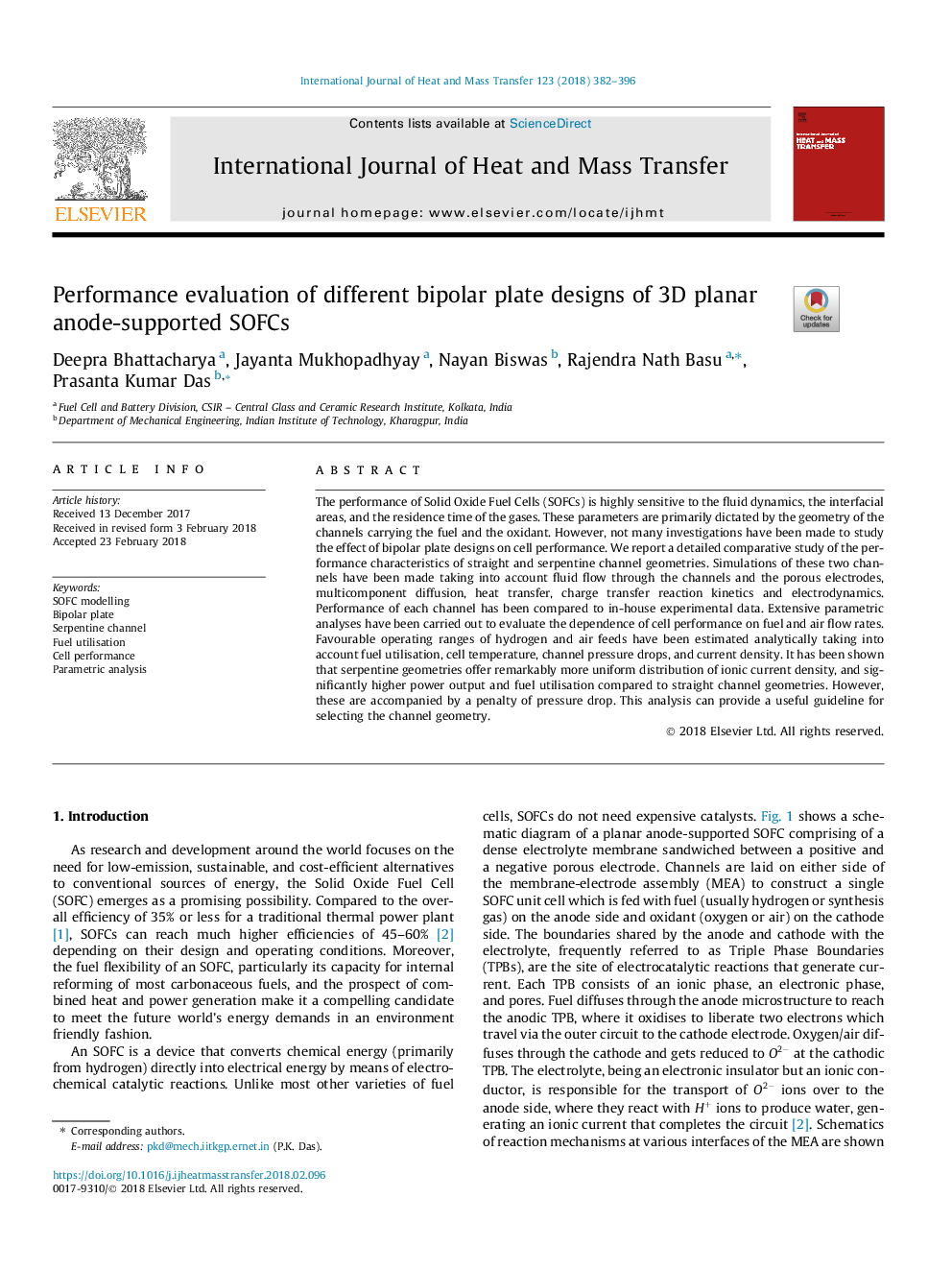| Article ID | Journal | Published Year | Pages | File Type |
|---|---|---|---|---|
| 7054248 | International Journal of Heat and Mass Transfer | 2018 | 15 Pages |
Abstract
The performance of Solid Oxide Fuel Cells (SOFCs) is highly sensitive to the fluid dynamics, the interfacial areas, and the residence time of the gases. These parameters are primarily dictated by the geometry of the channels carrying the fuel and the oxidant. However, not many investigations have been made to study the effect of bipolar plate designs on cell performance. We report a detailed comparative study of the performance characteristics of straight and serpentine channel geometries. Simulations of these two channels have been made taking into account fluid flow through the channels and the porous electrodes, multicomponent diffusion, heat transfer, charge transfer reaction kinetics and electrodynamics. Performance of each channel has been compared to in-house experimental data. Extensive parametric analyses have been carried out to evaluate the dependence of cell performance on fuel and air flow rates. Favourable operating ranges of hydrogen and air feeds have been estimated analytically taking into account fuel utilisation, cell temperature, channel pressure drops, and current density. It has been shown that serpentine geometries offer remarkably more uniform distribution of ionic current density, and significantly higher power output and fuel utilisation compared to straight channel geometries. However, these are accompanied by a penalty of pressure drop. This analysis can provide a useful guideline for selecting the channel geometry.
Related Topics
Physical Sciences and Engineering
Chemical Engineering
Fluid Flow and Transfer Processes
Authors
Deepra Bhattacharya, Jayanta Mukhopadhyay, Nayan Biswas, Rajendra Nath Basu, Prasanta Kumar Das,
